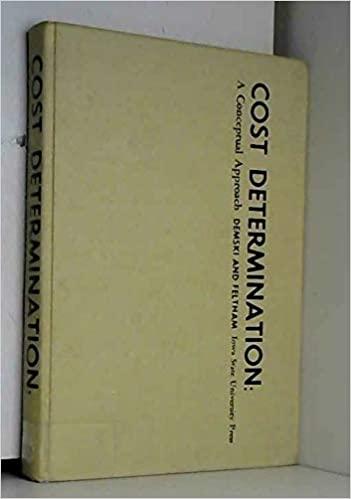Question
The comparative balance sheet of Harris Industries Inc. at December 31, 20Y4 and 20Y3, is as follows: Dec. 31, 20Y4 Dec. 31, 20Y3 Assets Cash
The comparative balance sheet of Harris Industries Inc. at December 31, 20Y4 and 20Y3, is as follows:
| Dec. 31, 20Y4 | Dec. 31, 20Y3 | ||||
| Assets | |||||
| Cash | $443,240 | $360,920 | |||
| Accounts receivable (net) | 665,280 | 592,200 | |||
| Inventories | 887,880 | 1,022,560 | |||
| Prepaid expenses | 31,640 | 25,200 | |||
| Land | 302,400 | 302,400 | |||
| Buildings | 1,713,600 | 1,134,000 | |||
| Accumulated depreciationbuildings | (466,200) | (414,540) | |||
| Machinery and equipment | 781,200 | 781,200 | |||
| Accumulated depreciationmachinery and equipment | (214,200) | (191,520) | |||
| Patents | 106,960 | 112,000 | |||
| Total assets | $4,251,800 | $3,724,420 | |||
| Liabilities and Stockholders' Equity | |||||
| Accounts payable (merchandise creditors) | $837,480 | $927,080 | |||
| Dividends payable | 32,760 | 25,200 | |||
| Salaries payable | 78,960 | 87,080 | |||
| Mortgage note payable, due in nine years | 224,000 | 0 | |||
| Bonds payable | 0 | 390,000 | |||
| Common stock, $5 par | 200,400 | 50,400 | |||
| Paid-in capital: Excess of issue price over parcommon stock | 366,000 | 126,000 | |||
| Retained earnings | 2,512,200 | 2,118,660 | |||
| Total liabilities and stockholders' equity | $4,251,800 | $3,724,420 | |||
An examination of the income statement and the accounting records revealed the following additional information applicable to 20Y4:
- Net income, $524,580.
- Depreciation expense reported on the income statement: buildings, $51,660; machinery and equipment, $22,680.
- Patent amortization reported on the income statement, $5,040.
- A building was constructed for $579,600.
- A mortgage note for $224,000 was issued for cash.
- 30,000 shares of common stock were issued at $13 in exchange for the bonds payable.
- Cash dividends declared, $131,040.
Required:
Prepare a statement of cash flows, using the indirect method of presenting cash flows from operating activities. Use the minus sign to indicate cash out flows, cash payments, decreases in cash, or any negative adjustments.
| Cash flows from operating activities: | ||
| Cash from dividendsCash from issuance of mortgage noteCash received from customersDepreciationNet incomeNet income | $Net income | |
| Adjustments to reconcile net income to net cash flow from operating activities: | ||
| Cash paid for dividendsCash received from issuance of mortgage noteDecrease in accounts receivableDepreciationIncrease in accounts receivableDepreciation | Depreciation | |
| Cash paid for construction of buildingCash paid for dividendsDecrease in inventoriesIncrease in accounts payablePatent amortizationPatent amortization | Patent amortization | |
| Changes in current operating assets and liabilities: | ||
| Decrease in accounts receivableDepreciationIncrease in accounts receivableIncrease in inventoriesIssuance of common stock to retire bondsIncrease in accounts receivable | Increase in accounts receivable | |
| Cash received from issuance of mortgage noteDecrease in accounts receivableDecrease in inventoriesIncrease in accounts payableIncrease in inventoriesDecrease in inventories | Decrease in inventories | |
| Cash received from issuance of mortgage noteDecrease in prepaid expensesIncrease in accounts payableIncrease in prepaid expensesIncrease in salaries payableIncrease in prepaid expenses | Increase in prepaid expenses | |
| Cash paid for dividendsDepreciationDecrease in accounts payableIncrease in accounts payablePatent amortizationIncrease in accounts payable | Increase in accounts payable | |
| Decrease in accounts receivableDecrease in salaries payableDepreciationIncrease in salaries payableIssuance of common stock to retire bondsDecrease in salaries payable | Decrease in salaries payable | |
| Net cash flow from operating activities | $fill in the blank 17 | |
| Cash flows from investing activities: | ||
| Cash paid for construction of buildingCash received from issuance of mortgage noteCash received from customersCash received from patent amortizationCash paid for construction of building | $Cash paid for construction of building | |
| Net cash flow used for investing activities | fill in the blank 20 | |
| Cash flows from financing activities: | ||
| Cash received from issuance of mortgage noteCash received from decrease in accounts payableCash paid for depreciationCash from increase in prepaid expenses | $- Select - | |
| Cash paid for dividendsCash paid for construction of buildingDepreciationIncrease in accounts receivableIssuance of common stock to retire bondsIssuance of common stock to retire bonds | Issuance of common stock to retire bonds | |
| Net cash flow from financing activities | fill in the blank 25 | |
| Cash received from issuance of mortgage noteChange in cashDecrease in accounts receivableDepreciationIncrease in accounts receivable | $- Select - | |
| Cash at beginning of the year | fill in the blank 28 | |
| Cash at end of the year | $fill in the blank 29 | |
| Schedule of Non cash Financing and investing Activities: | ||
| Cash paid for construction of buildingCash received from issuance of mortgage noteDepreciationIssuance of common stock to retire bondsPatent amortization | $- Select - |
Step by Step Solution
There are 3 Steps involved in it
Step: 1

Get Instant Access to Expert-Tailored Solutions
See step-by-step solutions with expert insights and AI powered tools for academic success
Step: 2

Step: 3

Ace Your Homework with AI
Get the answers you need in no time with our AI-driven, step-by-step assistance
Get Started


